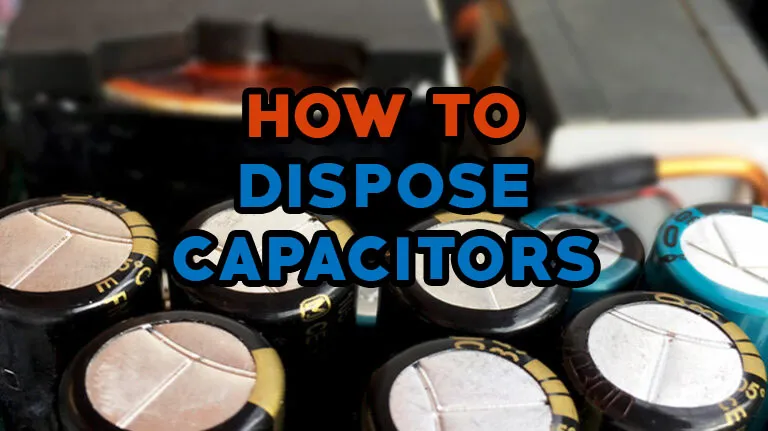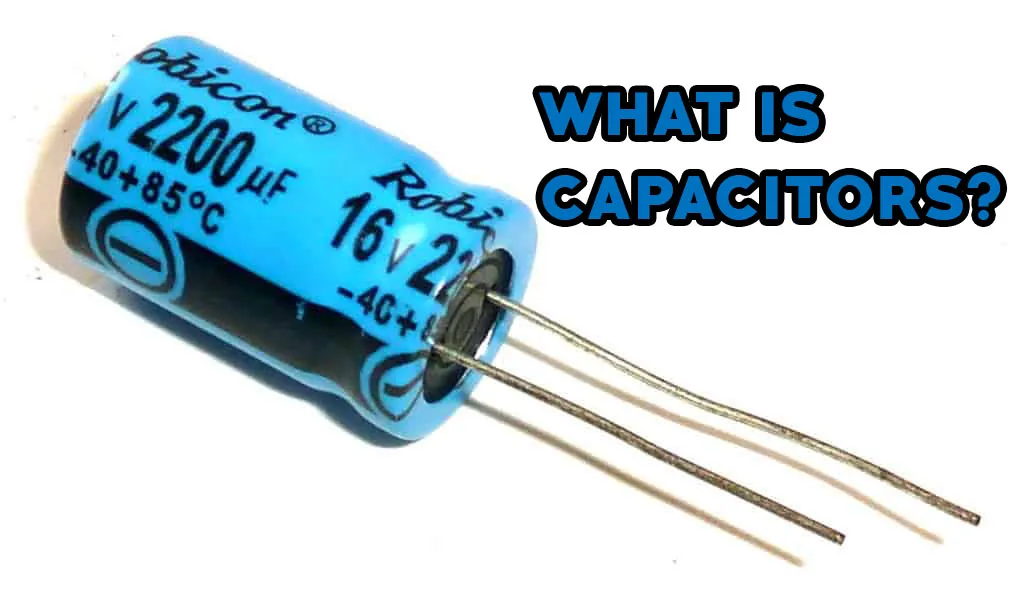How to Dispose of Capacitors?

How to Dispose of Capacitors
Charges are what capacitors use to store electricity, unlike batteries. Chemicals or heavy metals can also be present in them, as well as hazardous materials. It can be harmful to the environment and to human health if improper disposal is carried out.
It will be our goal to discuss How to Dispose of Capacitors throughout this article. It will be discussed what types of capacitors are available, how they may cause hazards, and how they should be disposed of, including recycling. It is possible to manage electronic waste in a sustainable manner by following these guidelines.
What is a Capacitor?

What is Capacitor?
An electric capacitor (originally called an electric condenser) gathers and stores electrical energy. An alternating current flow flows back into the circuit due to the flow of direct current into a capacitor. Legs, pads, or plates commonly serve as positive and negative terminals for capacitors. One leg of the capacitor receives current, one leg receives current, and one leg terminates the current.
A circuit's electrical energy can be controlled with the help of these components. A clever chemistry inside the capacitor eliminates voltage spikes and stores energy for later use. Despite looking similar, capacitors are quite different from batteries. The capacitor is not designed for long-term energy storage, and it can be discharged almost instantly.
How to Dispose of Capacitors?
When removing a capacitor to dispose of, you should take precautions since it is designed to store electricity. Make sure the electronic item has not been accidentally shocked after unplugging it for at least 48 hours. If any power is unused, it should evaporate over the next few days.
It is also advisable to wear acid-resistant gloves and goggles when recycling air conditioner capacitors. In spite of disposing or recycling gadgets in an environmentally friendly manner, they are often transported internationally and dumped in pits.
How to Dispose of Capacitors Properly?
Disposing and recycling of large capacitors must be done in accordance with local regulations. Electronic waste, including capacitors, is governed by specific laws in many regions. Hazardous substances are managed safely and the environment is protected by these regulations.
Electronic waste and capacitors should be disposed of in the following ways:
Electronics recycling programs: Electronics can be safely disposed of through the recycling programs offered by many municipalities and organizations. Hazardous materials are handled and recycled properly through these programs.
Professional recyclers: Choose electronic recycling companies that handle hazardous materials responsibly. As well as extracting valuable components, these recyclers ensure that hazardous materials are properly disposed of.
Check local regulations: Ensure you are familiar with the local rules and guidelines regarding the disposal of capacitors. Information regarding waste management can be obtained from local authorities.
Hazardous waste facilities: It is recommended that capacitors be disposed of at designated facilities with expertise and infrastructure if they are classified as hazardous waste in your region. In order to ensure their safe handling and environmentally friendly disposal.
Are Capacitors Hazardous Waste?
Capacitors contain hazardous wastes such as oil and PCBs. Major appliances should be stripped of their capacitors. Oil is commonly found in capacitors. It is important to remove the capacitor for recycling to ensure that the metal is recycled securely. The polychlorinated biphenyls (PCBs) found in some oil-filled capacitors are dangerous. It is possible for recycled metal to be contaminated with oil residue if the metal has any.
Are There PCBs in Capacitors?
There are a variety of products that use PCBs, including capacitors for the electrical industry. There are smaller PCB-filled capacitors used in electric motors, welding, and fluorescent lights. PCBs typically weigh about 50 grams.
Metal enclosures surround running capacitors. It is possible for oil-filled capacitors manufactured after 1979 to have a stamp on the housing that reads "NO PCBs". It is possible to use oil-filled capacitors as starting capacitors since they contain no PCBs.
Why Do Old Capacitors Explode?
Based on the search results, old capacitors may explode for several reasons:
There are a number of reasons why internal components fail, including poor manufacturing processes.
The capacitors can also deteriorate if they are left unused for a long period of time. Dry electrolytes can cause damage or failure as a result of deterioration.
The use of old capacitors may also result in failure and possible explosion due to high levels of stress or overuse.
Capacitors that contain hazardous materials, such as polychlorinated biphenyls, should be handled and disposed of properly.
Faqs
Question 1: How should capacitors be disposed of?
Answer: Electronic waste disposal regulations and guidelines must be followed when disposing of capacitors. Regular trash bins should not be used to dispose of capacitors. To recycle electronic waste, electronic waste programs, or hazardous waste facilities should be contacted. In these facilities, electronic components can be safely handled and recycled.
Question 2: What is the best way to dispose of non-PCB capacitors?
Answer: It is possible to recycle non-PCB equipment as scrap metal and oil. According to 40 CFR 761, waste PCB-containing equipment must be disposed of in a specialized manner like hazardous waste.
Question 3: Do capacitors have toxic chemicals?
Answer: There is a possibility that some capacitors contain hazardous or toxic chemicals. If ingested or touched by the skin or eyes, electrolytic capacitors can contain corrosive electrolytes. Manganese dioxide may be present in tantalum capacitors in small amounts. In order to avoid exposure to potentially toxic chemicals, capacitors should be handled and disposed of properly.
Question 4: Do capacitors leak energy?
Answer: The energy stored in capacitors does not leak over time. The electrical energy stored in capacitors can be retained for a long time when fully charged. The dielectric material of some capacitors may conduct a small amount of current, causing a slow discharge. Leakage currents are minimal in well-functioning capacitors and do not significantly affect their performance.
Final Thoughts
There are a number of materials present in electronic garbage, including lead, cadmium, beryllium, mercury, and brominated flame retardants. Electronics and gadgets that are improperly disposed of increase the likelihood that these toxic substances will be released into the environment.
This results in contaminated land, polluted air, and contaminated water bodies. So i hope after reading our article which is about how to dispose of Capacitors, you are going to dispose of it easily. If you still don't understand how to get rid of capacitors, then you need to look for a professional person to do it.
Related Articles
How Long Do Electrolytic Capacitors Last
How to Charge Capacitor Without Resistor?
Variable Capacitors: A Complete Guide
Unveiling Polypropylene Capacitors: Principles, Applications, and Future Trends
Capacitors in Series Calculator: Everything Explained
Capacitor vs Resistor: What's the Differences?
AC Capacitor Keeps Blowing: What to Do Next?
Film vs Ceramic Capacitor: What's the Differences?
How to Charge Capacitor Without Resistor?
Ceramic Capacitor Advancements: Innovations and Applications
Air Conditioner Capacitor Basics: What You Need to Know
What Is CBB61 Capacitor - Function and Applications










